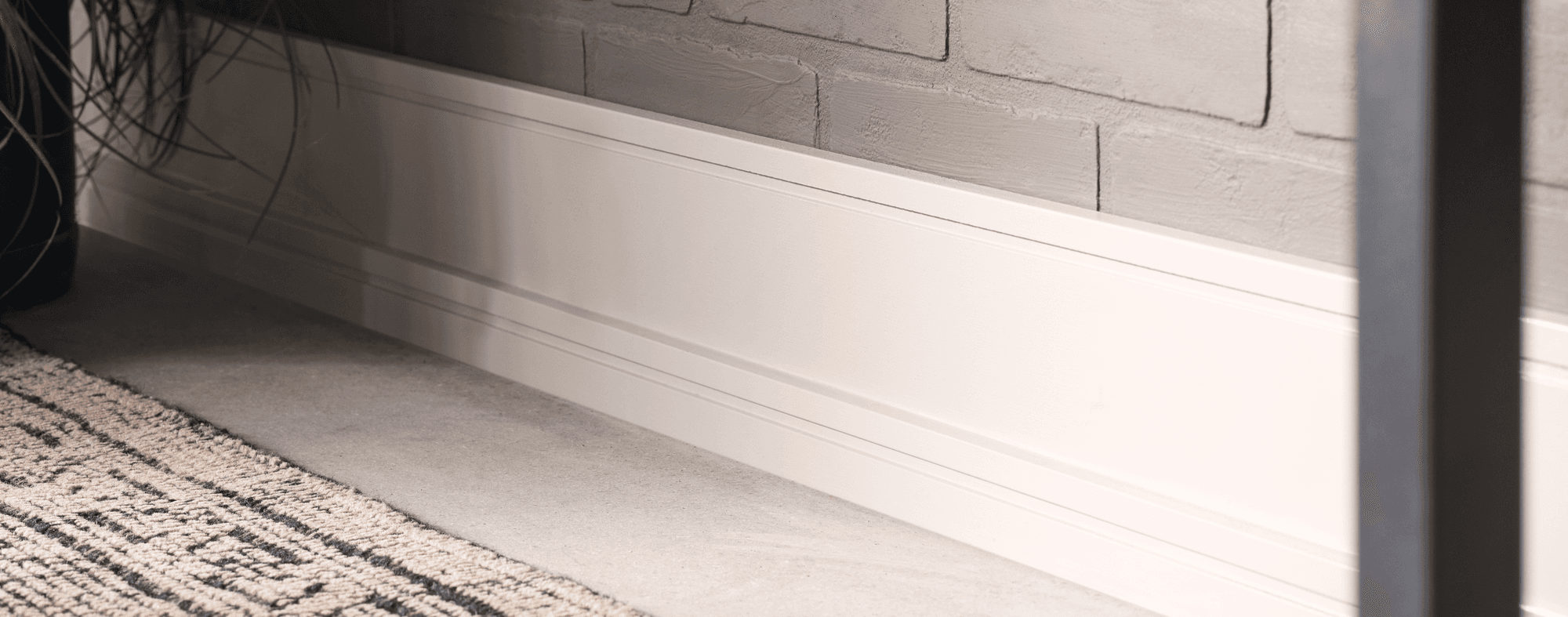Creating a Seamless Look: Baseboard Height Guidelines for Carpet Flooring
March 6, 2023
By: The Finished Space
That’s why we decided to create this comprehensive guide for installing baseboards on carpet flooring, including height guidelines and best practices.
What Are Baseboards?
Before we get too far in the weeds, let’s take a moment to discuss what baseboards are and why they’re so popular in home development. Baseboards are a type of decorative trim that runs along the bottom of interior walls.
Their primary purpose is to provide a visual transition between the wall and the floor, to create a distinct separation between the two. They also often serve as added protection for your walls when you’re cleaning and moving furniture.
The Benefits of Installing Baseboards in Your Home
If you’re on the fence about whether baseboards are right for your home, think again. There are many reasons why you should install baseboards in your home, but here’s a list of their top benefits:
Clean Transitions: As we already mentioned, baseboards create seamless transitions between your walls and your floor, which helps the eye focus better on what it’s seeing.
Visual Interest: As a result, the walls look way more visually appealing with baseboards than they would without them.
Added Protection: Baseboards also protect your walls from damage when you’re using a vacuum cleaner or moving furniture.
Hides Imperfections: One of the most difficult parts of any flooring job is where the flooring meets the wall. There are always small gaps left behind, which are sometimes necessary, depending on your flooring. Fortunately, baseboards can cover up gaps and hide minor imperfections.
Aesthetic Appeal: Lastly, baseboards can add a touch of elegance and sophistication to your home. Plus, they’re applicable to almost any interior design aesthetic.
How to Install Baseboards on Carpet Flooring
How are you supposed to install baseboards when you have carpet? Whether you’re a professional contractor, home designer, or novice DIYer, you may not know how to install baseboards over carpet flooring. Fortunately, we’ve got you covered!
Here’s a step-by-step guide on installing baseboards over carpet flooring that’s already been installed or over floors pre-carpet installation, including the recommended supplies, measurement guidelines, and more.
Step 1: Remove Old Baseboards
If you have old baseboards already in place, you should remove them before you get started. Once the baseboards are removed, we recommend cleaning your walls and carpet thoroughly before moving on to the next step. Dirt and debris can result in serious damage in the long run, so you want to avoid that at all costs.
Step 2: Gather the Supplies
Next, you need to gather your tools and supplies. These may vary depending on the size of your project and your own personal preferences, but here’s a go-to supply list that we recommend for installing baseboards:
Measuring Tape
Miter Saw
Level
Carpenter’s Pencil
Drill and Screws
Nail Gun
Caulking Gun
Sandpaper
Protractor
Step 3: Take Measurements and Order the Baseboards
Before you purchase your baseboards, you should take accurate measurements for the installation. Be sure to measure every inch of space you’ll need to cover, and then use the information to purchase your baseboards. As a rule of thumb, we recommend buying a little more than you need, just in case you run into any cutting or sizing issues.
Step 4: Check the Level
Next, it’s time to check and ensure that your floors are level. If you have uneven floors, you’ll have to do a lot more work on your baseboards to make them fit properly. That being said, we will continue this guide as if your floors are already level, and you don’t have to customize your baseboards.
Step 5: Cut the Baseboards
Next, it’s time to cut your baseboards to fit the measurements you took in step two. Try to be as economical as possible during this step to waste as little material as possible.
Cutting Corners
Of course, you can install baseboards without cutting corners – and we don’t mean that the way it sounds! When cutting your baseboards to fit around inside and outside corners, you have to ensure that they are cut perfectly to fit your wall’s angles. This will usually be around 45 degrees (or 90 degrees when combined), but not always. Always be sure to double-check your angle measurements using your protector and level.
Step 6: Install The Baseboards
Using your nail gun, drill, or the adhesive recommended by your supplier, it’s time to attach your baseboards to the bottom of your wall. With tile, vinyl, or hardwood flooring, you would install the baseboards flush with the flooring, leaving no gaps between the baseboard and the floor. However, this part of the installation process is a little different for carpet flooring.
Installation Height Guidelines for Carpet Flooring
If you’re installing the baseboards pre-carpet installation, we recommend leaving a 1-inch gap between the wall and the floor for the pad and carpet. This is more than enough space for the carpet installation without leaving too much room for dirt and debris. For floors with carpets already installed, you should press the baseboards snugly into the carpet fibers, and use a level to ensure they’re straight.
Step 7: Finishing Touches
Once your baseboards are completely installed, it’s time to add the finishing touches. Using sandpaper and caulk, fill any holes, gaps, or imperfections in the installation. Once you’re finished, take a step back and enjoy your work!
Upgrade Your Home with Beautiful Baseboards from Metrie
If you’re looking for beautiful baseboards to install in your home, you’ve come to the perfect place. At Metrie, we specialize in high-level craftsmanship paired with expert design, so you can rest assured that you’re getting the best products possible for your home décor. Check out our vast catalog of moulding and trim products to learn more!

